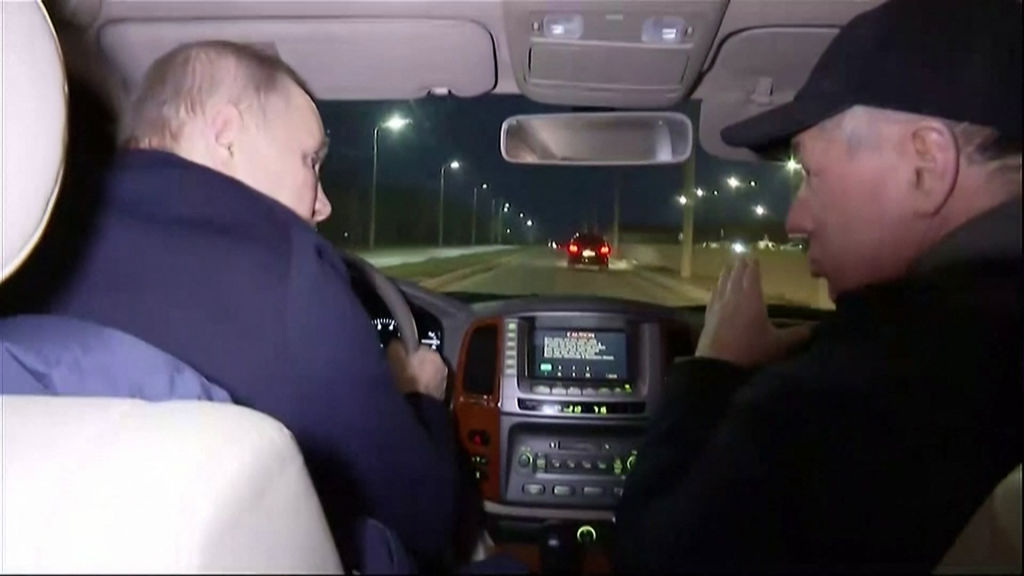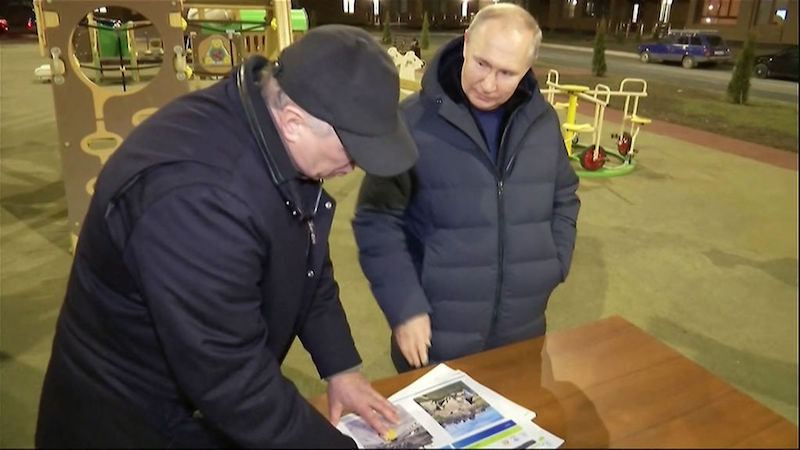Was it Vladimir Putin or wasn’t it? ‘Vladimir Putin’ was certainly shown on television being helicoptered into Crimea this week, meeting ‘the people’ and driving himself around reconstruction sites in the devastated city of Mariupol.
In the wider world, though, there was widespread scepticism that it was the real Russian President. Clips were posted on social media showing the supposedly different chin-line and puffier cheeks of the latest ‘Putin’, while even the BBC injected a note of doubt into some of its despatches, using words like ‘reportedly’ to qualify his (potential) visit.
There have long been rumours that Putin uses a body-double – although it is also possible that his apparently different facial features are because of medical treatment. If Putin does use a double, he would not be the first Russian leader to do so, nor the first national leader worldwide.
Long before Putin, Stalin was one of those reputed to have deployed a double, largely for security reasons. Hitler, too, along with North Korea’s Kim Jong-Un. And Saddam Hussein. You get the drift here of the sort of leader likely to use such a deception, or the sort of leader propagandists would like to present as likely to use one. For many, Putin (now more than 20 years at the helm of Russia) would clearly fit the pattern. It should be said though that while dictators and autocrats dominate the market for political doubles, General Montgomery notably had a ‘double’ which allowed ‘Monty’ to rally the troops in two places at once.
It is not hard to divine why a national leader in a country with no democratic constraints and no free media might think it a good idea. Being somewhere, while simultaneously not being somewhere, is both the perfect security precaution, and an excellent economy of time.
I wonder, though, how far the scorn attached to the (reported) use of body doubles is really justified. How much does it really matter whether it is the real Putin or a false Putin who was in Mariupol?
Of course, there are ways in which it does matter whether the leader is appearing in person or not. If the real Putin did not go to these Russian-occupied areas of Ukraine, this suggests that the Kremlin judged the security situation to be less than ideal, or that Putin’s health was not up to the trip, or that he had more important things to do.
Whether it was a genuine Putin or a false one, however, the message conveyed by the trip was the same. The Kremlin clearly wants to show that Russia is in charge in Crimea and particularly in Mariupol, that the remaining population is not in revolt, and that rebuilding is proceeding apace.
This was an important message to get across to the Russian domestic audience, where support for the war may or may not be waning. But it might also have been designed for Chinese leader Xi Jinping, too, ahead of his state visit to Moscow this week – to show that Russia has made gains in Ukraine, which it is consolidating, and to counter western reports to the effect that Russia is losing.
To an extent, all political messaging is artifice. The Kremlin’s priority was to show that Russia was in charge in this occupied territory here and that the President could move around as he chose. And this is what the footage showed, regardless of whether the Putin shown driving the car was real. It is worth adding that the real Putin really likes driving, to the point where, before the war, it became a bit of a signature activity for him, whether it was opening a new road across Russia; demonstrating a new Russian car marque; or inaugurating the road bridge to Crimea. Showing him at the wheel was another way to give this visiting ‘Putin’ authenticity.

That said, it is unclear if body doubles will be useful for much longer. The whole concept already has more than a whiff of obsolescence. At a time when a young Abba can appear holographically on a London stage to universal applause, the days of physical doubles are surely numbered. In politics, too. Almost a year ago I was at an election rally in France, where the dark horse for president, Jean-Luc Melenchon, appeared as a hologram to hold forth simultaneously in 11 cities across France.
So the career prospects of aspiring Putin-doubles may be limited. Technology moves on. For many, however, the hologram could be the ultimate bad news, facilitating a ubiquitous Putin – for everyone, everywhere, forever.






Comments